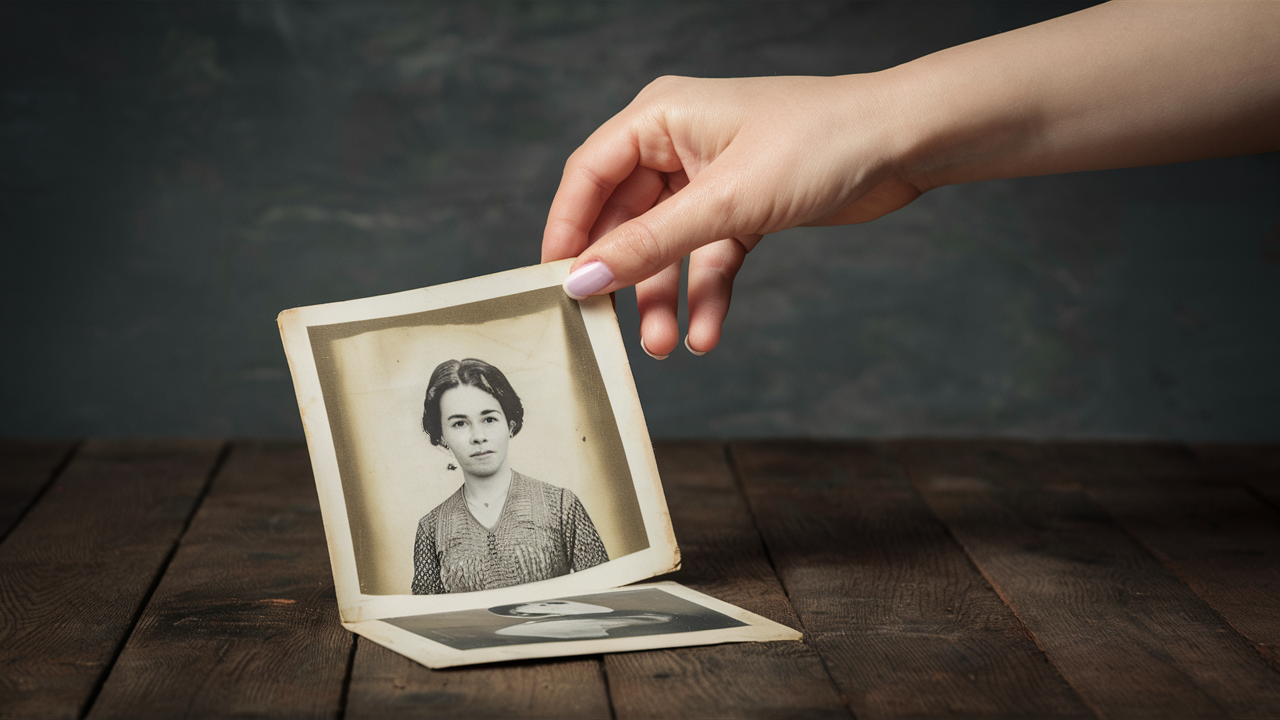Our female ancestors are hiding. They’re elusive. Slippery. But we’re gonna change that. Right now.
Here’s the deal: tracing your female lineage is tough. But it’s not impossible. You just need the right tools. The right mindset. And a dash of creativity.
Ready to uncover the hidden heroines in your family tree? Let’s dive in.
1. Start with Family Records
First things first. Raid your attic. Seriously.
Family records are gold. Oral histories? Pure platinum. Interview those elderly relatives. Now. Before it’s too late.
Look for letters. Diaries. Family bibles. And don’t forget heirlooms. That old quilt? It might hold the key to your great-grandmother’s identity.
But here’s the kicker: don’t just collect. Analyze. That faded signature on a letter? Compare it to official documents. The names scribbled in a family bible? Cross-reference them with census records.
And those heirlooms? Examine them closely. A monogrammed locket might reveal a middle name. A hand-painted china bowl could have a wedding date. Every detail matters.
2. Vital Records: The Holy Trinity
Birth. Marriage. Death. These are your bread and butter.
Birth certificates reveal mother’s maiden names. Marriage records? They’re a goldmine of family connections. And death certificates? They’re the final piece of the puzzle.
Pro tip: Check for delayed birth certificates. They’re a thing. And they’re awesome.
But don’t stop there. Look for marriage licenses, not just certificates. They often contain more info. And wedding announcements in newspapers? Pure gold.
For death records, don’t forget funeral home records. They can be surprisingly detailed. And obituaries? They’re biographical treasure troves.
Remember: consistency is key. Check every vital record for every ancestor. No exceptions.
3. Census Records: Your Time Machine
Federal censuses are great. But state censuses? They’re the secret weapon.
Track your female ancestors through the decades. Watch families grow. Shift. Change.
And don’t ignore those seemingly useless columns. Literacy. Citizenship status. Number of children born vs. living. They all tell a story.
Here’s a trick: look at the neighbors. Your ancestor’s sister might be living next door under her married name.
And those special censuses? Mortality schedules. Veterans censuses. They’re genealogical dynamite.
4. Church and Religious Records
Churches were meticulous record-keepers. Use that to your advantage.
Baptismal records often name godparents. Who were they? Family members? Clues to your ancestor’s family?
Marriage records might reveal more than civil records. And membership lists? They’re like historical Facebook.
Don’t forget Sunday School records. Or church histories. Your great-great-grandmother might be mentioned as a founding member.
5. Cemetery and Funeral Home Records
Graveyards aren’t just for Halloween. They’re genealogical goldmines.
Tombstones can reveal maiden names. Family relationships. Even occupations.
But here’s the secret: cemetery records often contain more than what’s on the stone. Check them. Always.
And funeral home records? They’re the unsung heroes of genealogy. Names of survivors. Cause of death. Even the person who paid for the funeral. All clues.
6. Probate and Court Records
Wills aren’t just for the wealthy. Even your poorest ancestor might have left one.
Look for mentions of daughters. Sisters. Nieces. Their married names might be right there in black and white.
Guardianship records are goldmines for identifying mothers. And divorce records? They’re not just for modern times. Your ancestors had relationship drama too.
Don’t ignore regular court cases. Women appeared as witnesses. Plaintiffs. Even defendants. Each appearance is a snapshot of their lives.
7. Land and Property Records
Property records aren’t just about men. Women owned land too. Especially widows.
Look for deeds where women relinquished their dower rights. It’s a clue to marriages.
Homestead records are particularly valuable. They often contain detailed family information.
And tax records? They’re not just boring lists. They can reveal when a woman became a widow. Or when she came of age.
8. Newspapers and Published Sources
Newspapers are more than just obituaries. Though those are pretty great too.
Look for social columns. Club meetings. Church events. Women were active in their communities.
Published county histories often contain biographies. And city directories? They’re yearly snapshots of your ancestors’ lives.
Don’t forget about community cookbooks. They’re like historical Facebook for women.
9. Military Records
Your female ancestor didn’t serve? Doesn’t matter. Check military records anyway.
Widows’ pension applications are genealogical gold. They often contain marriage records. Family Bible entries. Even physical descriptions.
And those Southern Claims Commission records? They’re a goldmine for Civil War era research.
10. Immigration and Naturalization Records
Passenger lists can reveal family groups. Look for women traveling with children but no husband. Widows? Or wives joining their husbands?
Naturalization records changed over time. Before 1922, women often became citizens through their husbands. But not always. Check for exceptions.
And don’t forget repatriation records. Women who lost citizenship by marrying foreigners had to reclaim it. Those records are packed with info.
11. Occupation and Education Records
Women worked. They studied. They achieved. Find the records.
School records aren’t just for kids. Check alumni lists. Yearbooks. Even school censuses.
Professional directories might list your female ancestor. Especially in fields like nursing or teaching.
And membership records for social or charitable organizations? They’re biographical goldmines.
12. Government and Institutional Records
Voter registration records are crucial. Especially after women’s suffrage.
Poor law and almshouse records aren’t just for the destitute. They often mention family members who couldn’t or wouldn’t provide support.
And institutional records? Asylums. Hospitals. Orphanages. They often contain detailed family information.
13. Utilize Online Genealogy Resources
The internet is your friend. Use it.
Ancestry.com. FamilySearch. MyHeritage. They’re just the beginning.
Dive into digitized book collections. Google Books. Internet Archive. HathiTrust. They’re packed with hidden genealogical treasures.
And don’t forget about genealogy forums and social media groups. Crowdsource your brick walls.
14. Archives and Libraries
Physical repositories still matter. A lot.
Local historical societies might have the only copy of a crucial record. University libraries often have unique collections.
State archives are treasure troves of original documents. And the Family History Library? It’s the motherlode.
Don’t just search online. Visit. In person. Talk to archivists. They know things.
15. DNA Testing and Genetic Genealogy
DNA isn’t just for solving crimes. It’s for solving family mysteries too.
Use DNA testing to confirm paper trails. To break through brick walls. To find new cousins who might have the missing piece of your puzzle.
Join DNA projects related to your family lines. Collaborate. Share. Discover.
16. Consider Historical and Social Context
Your female ancestors didn’t live in a vacuum. Understand their world.
Research women’s legal rights in different time periods. In different places. It affects what records were created.
Study community histories. Understand local customs. They shaped your ancestors’ lives.
And always consider ethnic and cultural traditions. They influenced everything from naming patterns to migration.
There you have it. 16 killer strategies to uncover your female ancestors. It’s not easy. But it’s worth it.
Remember: every document tells a story. Every record is a clue. And every woman in your family tree is waiting to be discovered.
Now get out there and start digging. Your female ancestors are counting on you.


